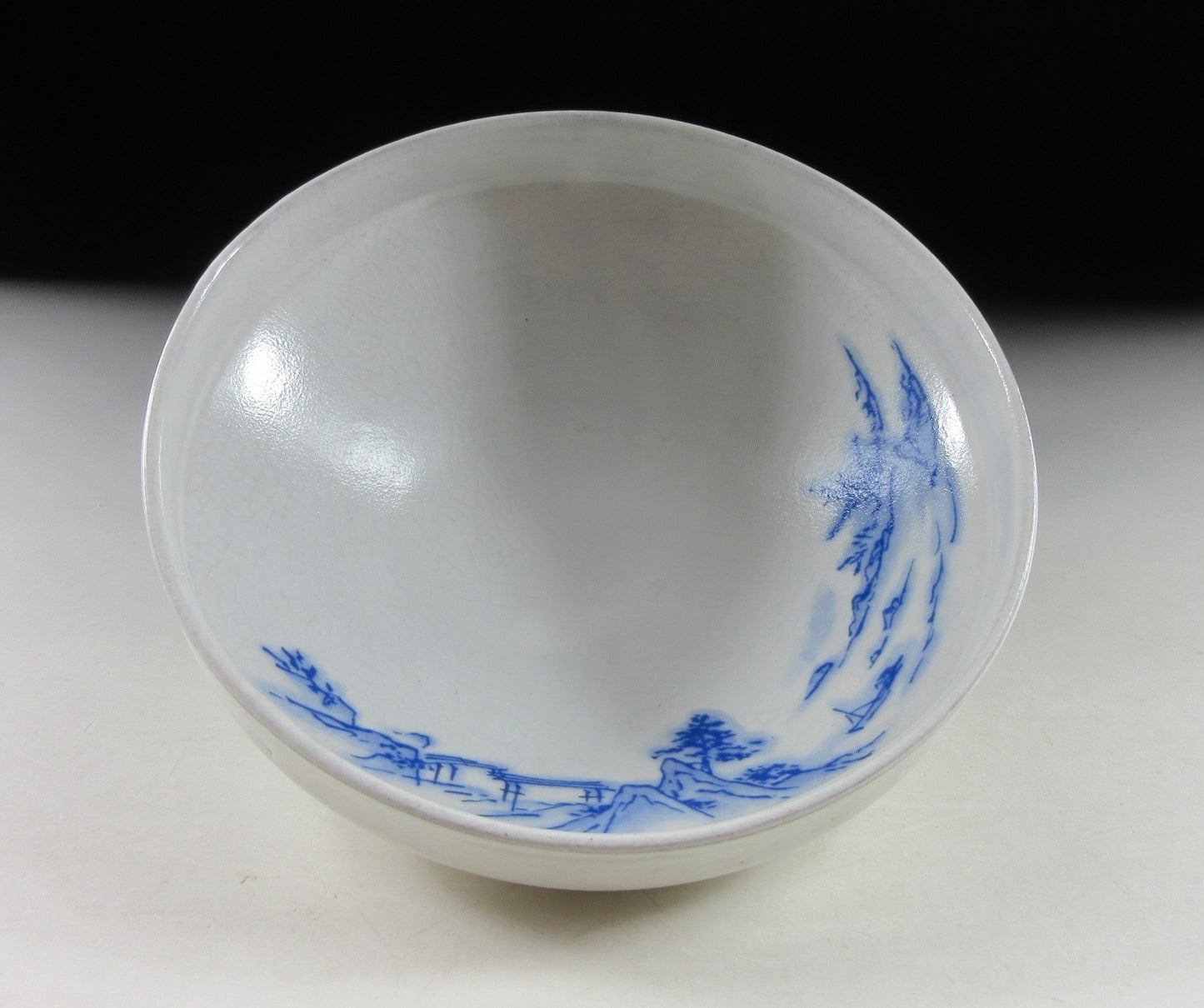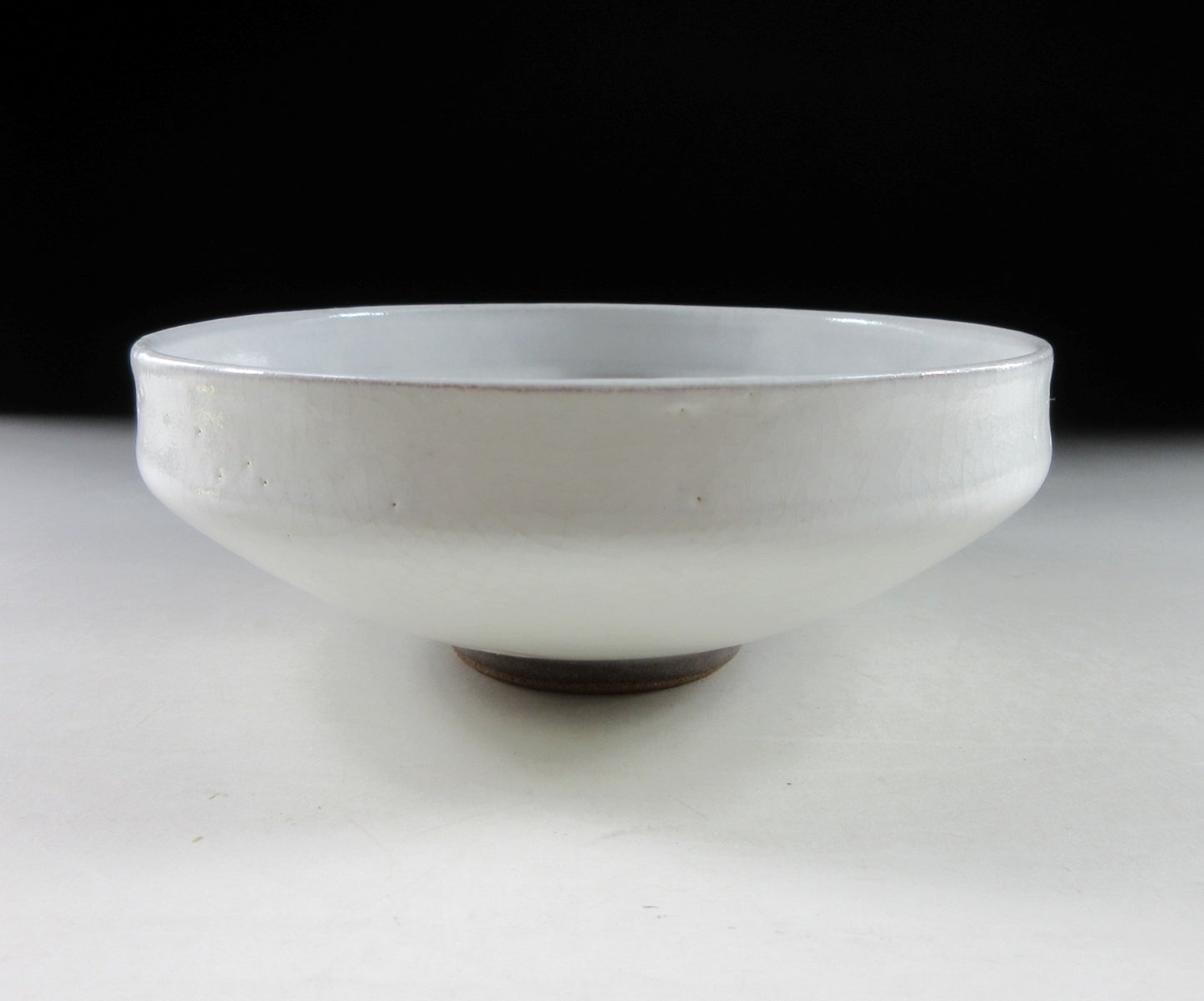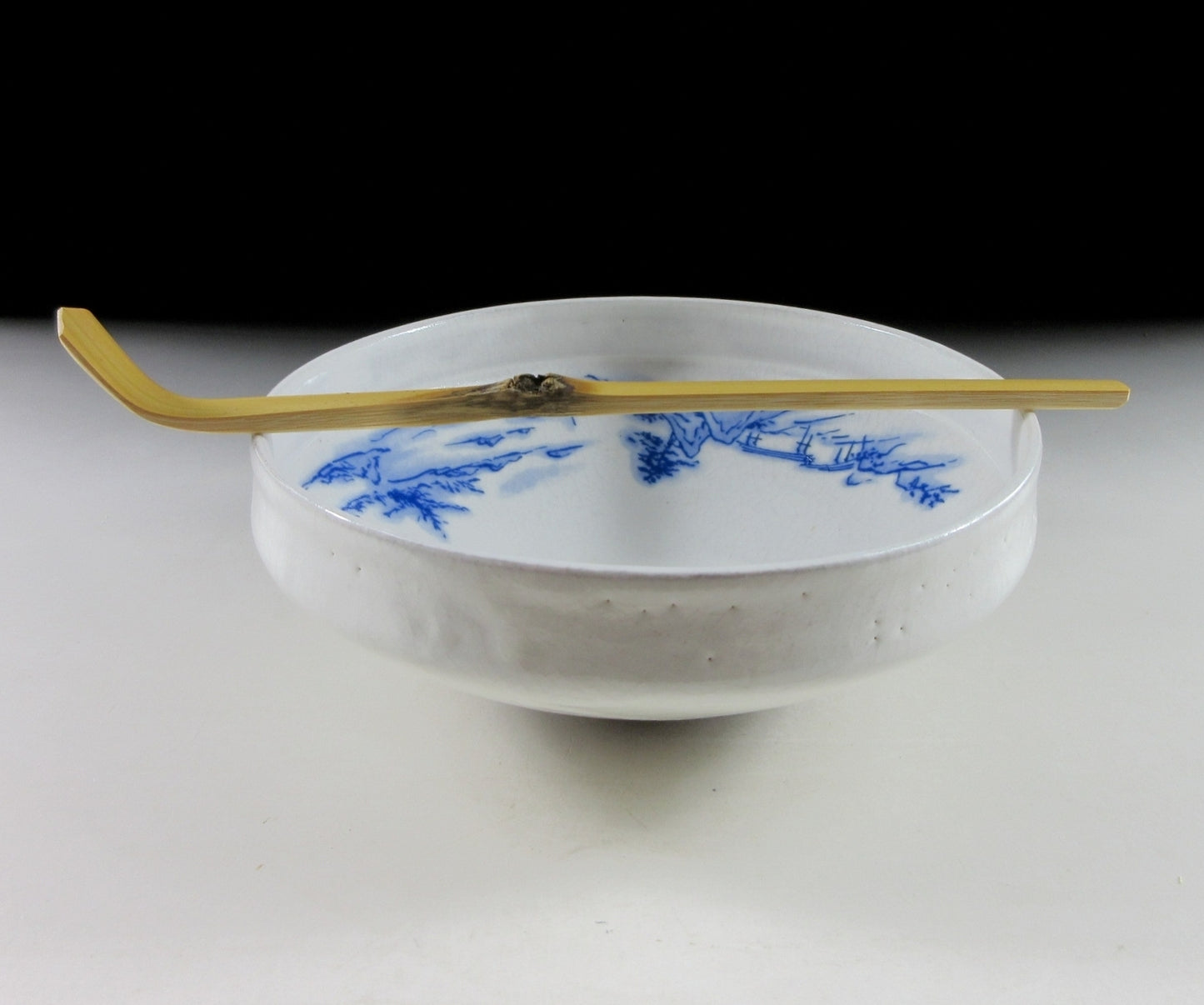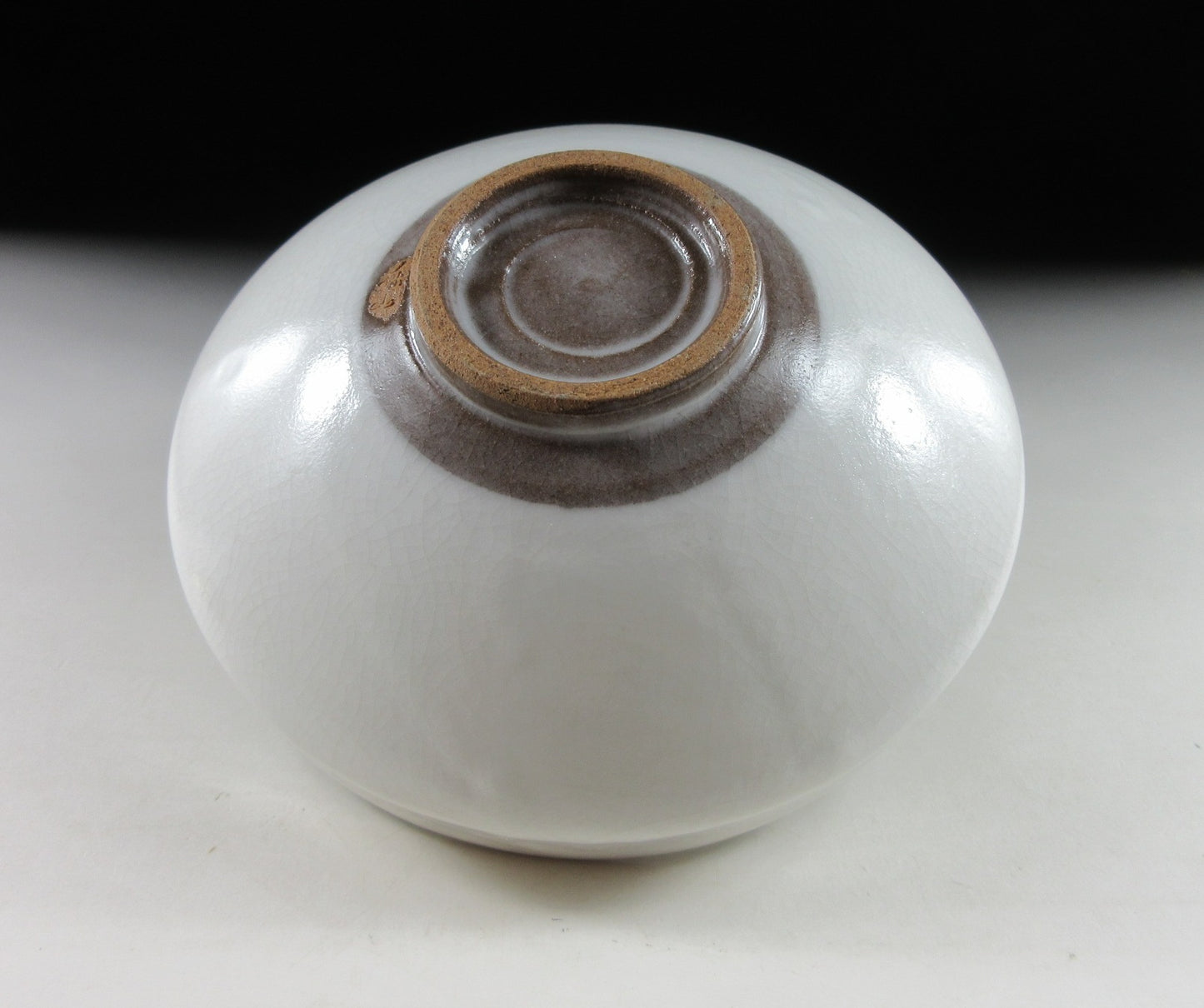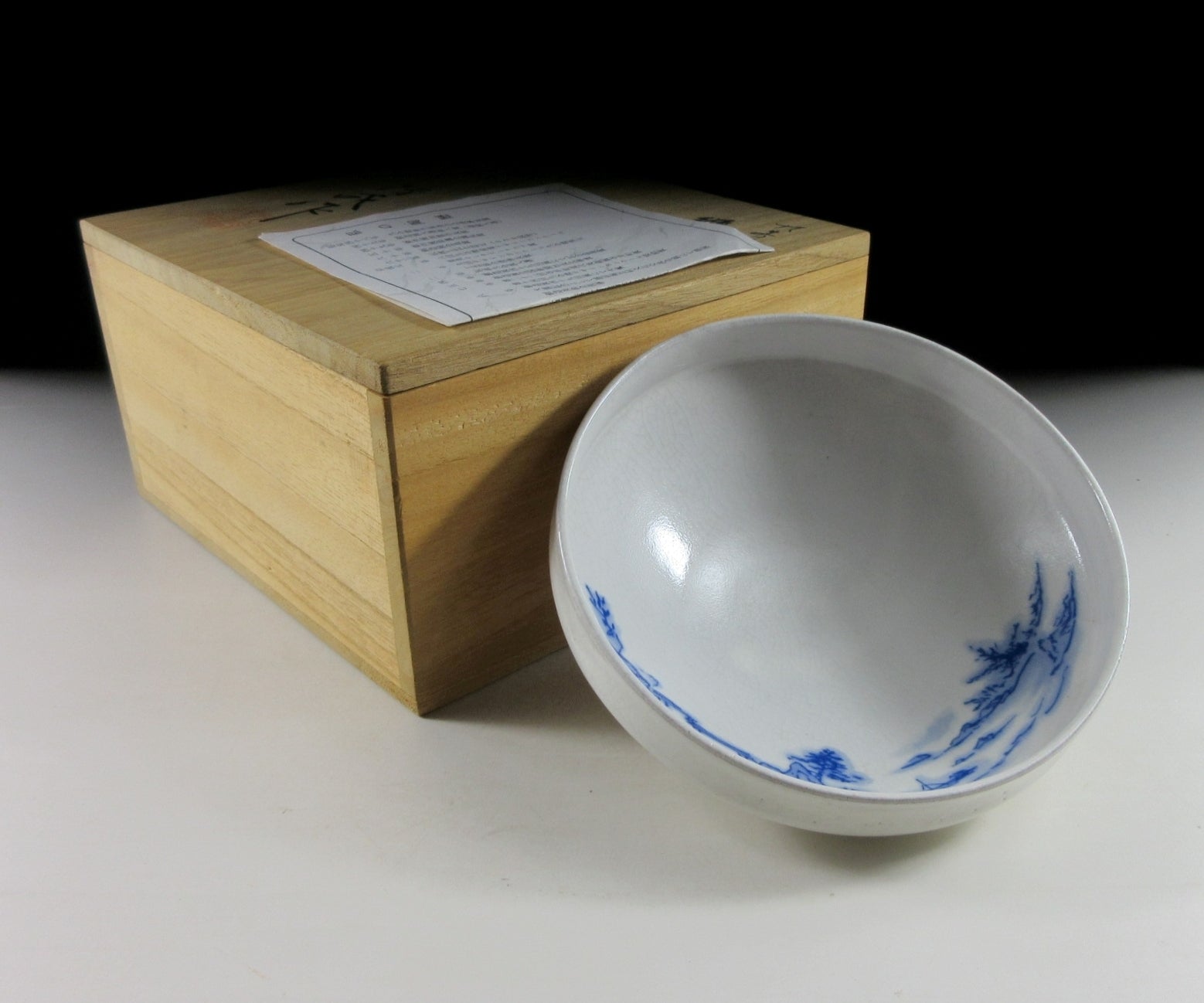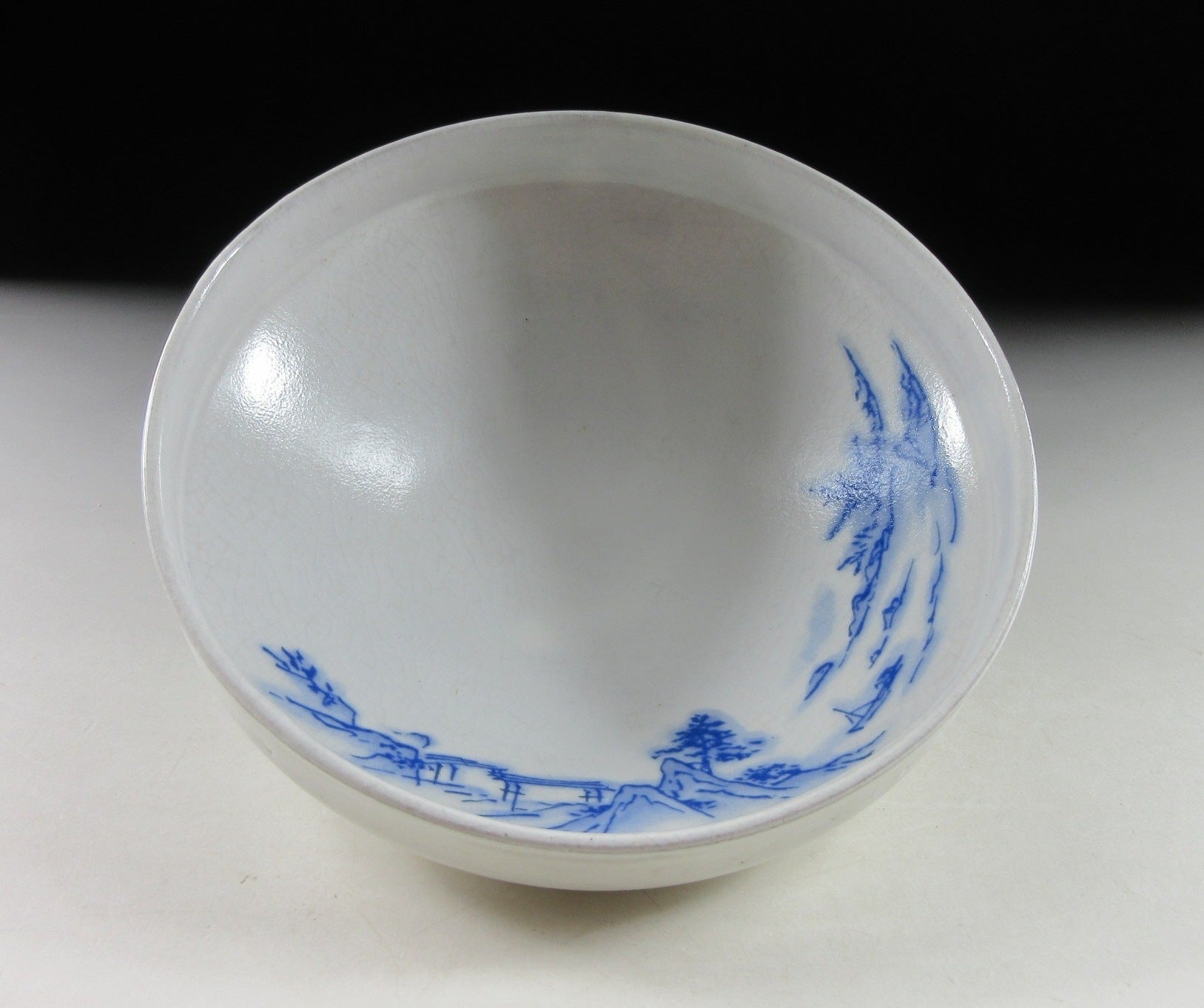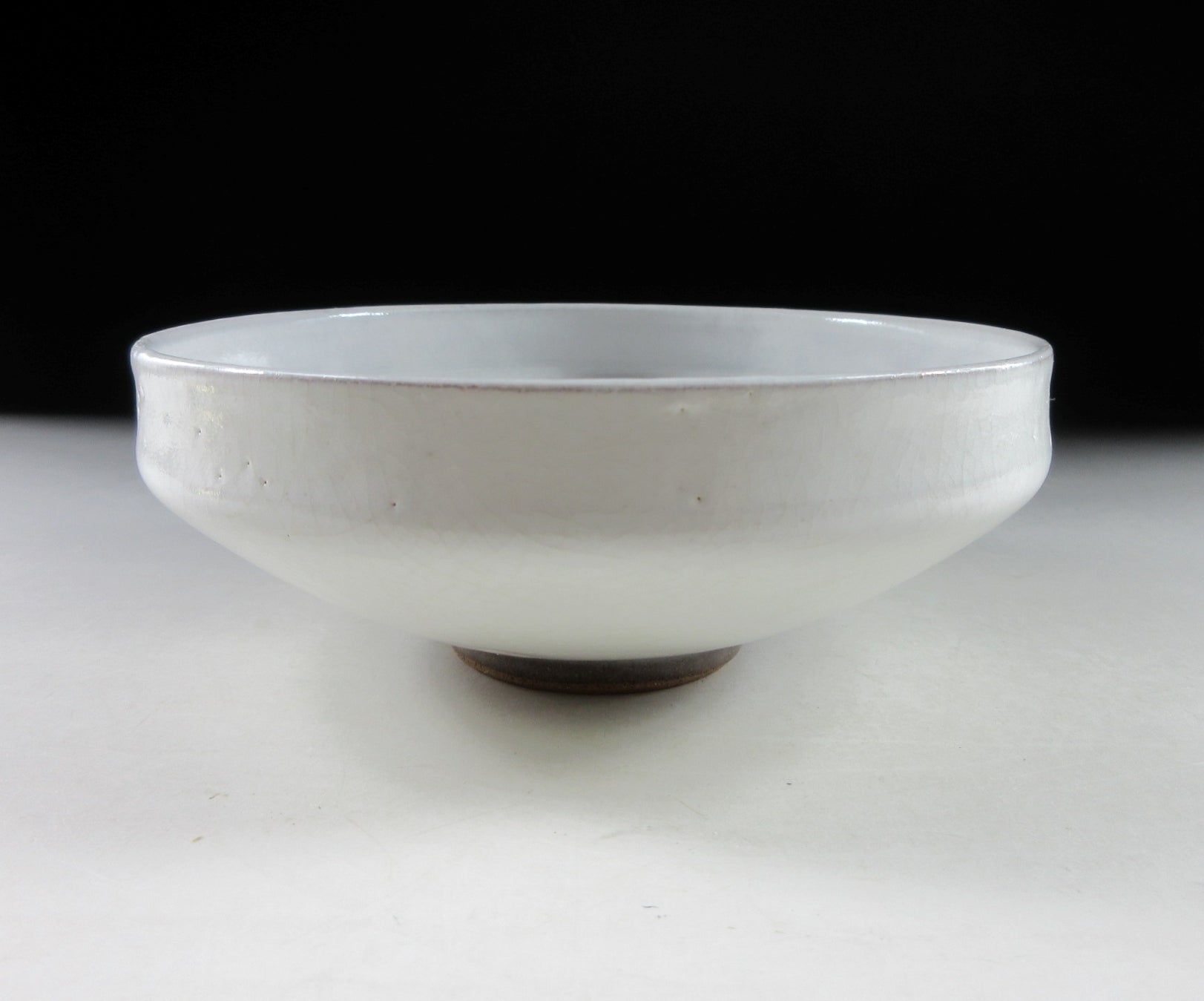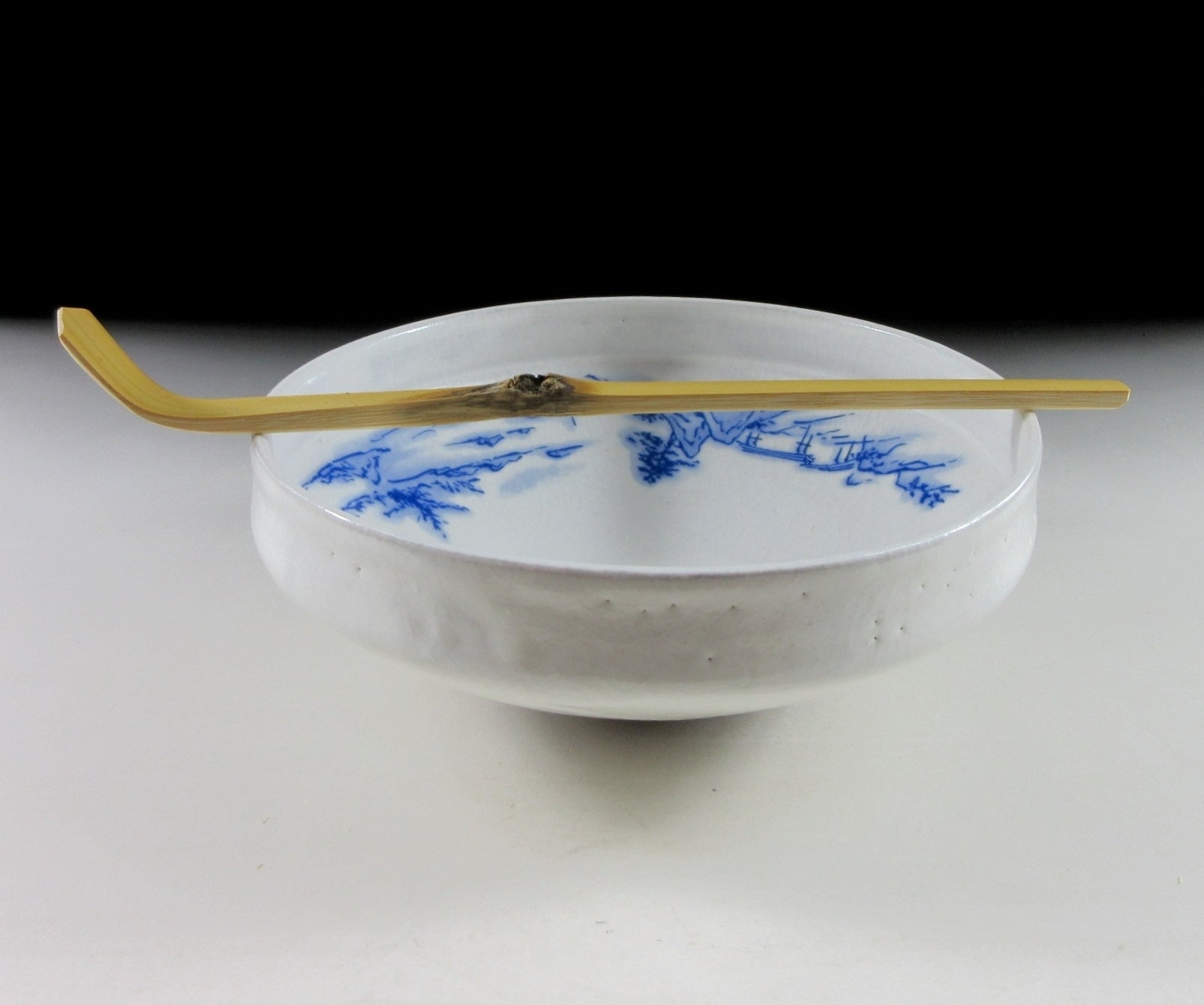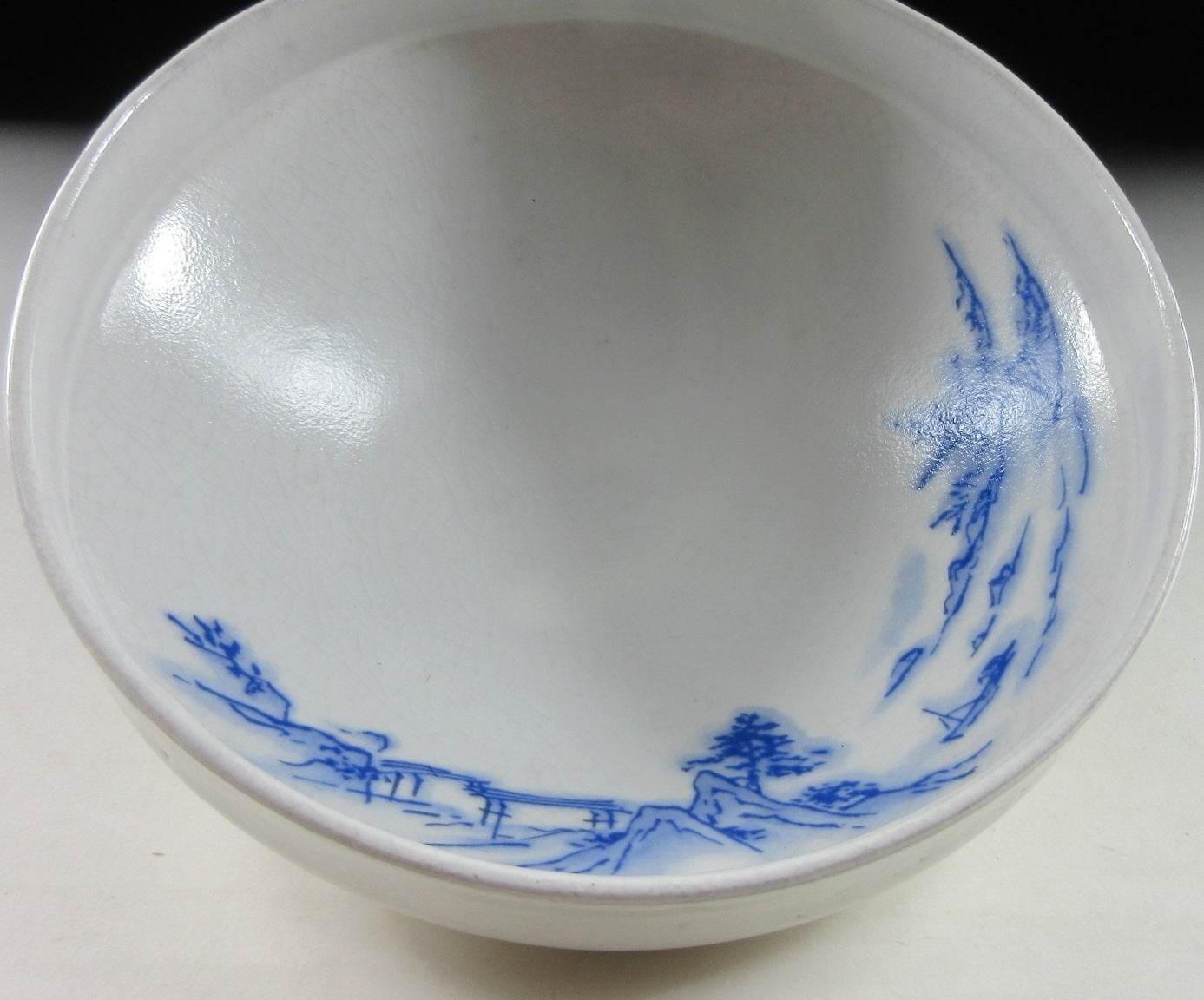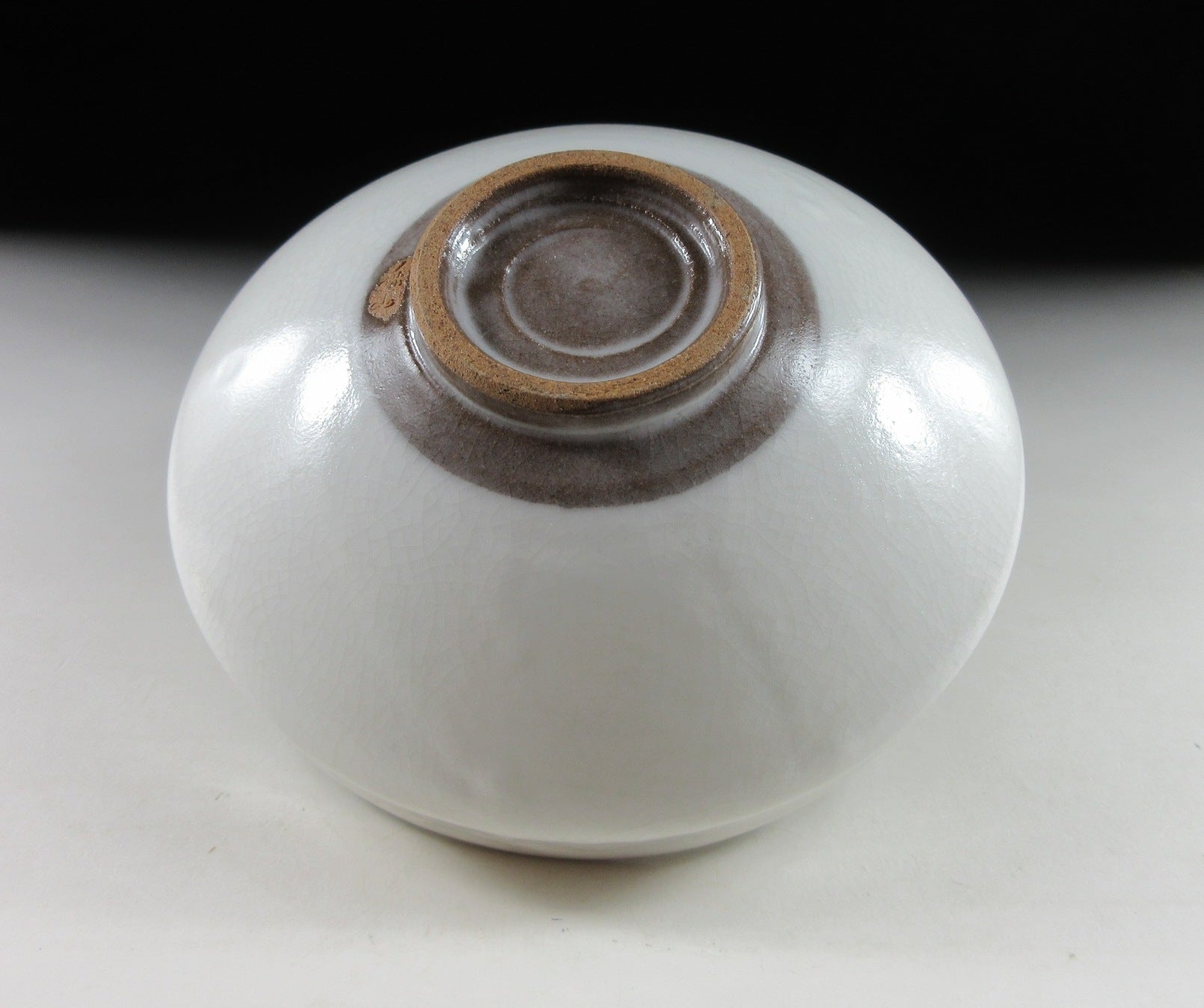Kominka Zakka
Kihara Gyosei Kutani-ware Hira Chawan
Kihara Gyosei Kutani-ware Hira Chawan
Couldn't load pickup availability
*SHIPPING OPTIONS VARY DEPENDING ON THE DESTINATION, PLEASE SCROLL TO THE END OF THIS LISTING FOR MORE DETAILS.
This listing is for a splendid Kutani-ware chawan made around 20 years ago by noted potter, Kihara Gyosei. It is wheel-thrown and the flat hira type used during the summer season. Hira chawan are shallow bowls with low sides designed to cool tea down faster. The bowl in this listing is decorated with landscape scenery including elements such as rocks, matsu pine and the sea. This piece is beautifully refreshing for summer and it appears unused. The stamp of the potter can be found on the bottom, and it comes with its original signed wooden storage box. It also comes with a Japanese language profile paper about the potter. *PLEASE NOTE THAT THE BAMBOO TEA SCOOP IS NOT INCLUDED.
Kihara Gyosei (1938-2022) was a Kutani-ware potter born in Echizen, Fukui Prefecture. In 1955 he began learning wheel throwing techniques at a pottery manufacturer in Ishikawa Prefecture, and he became independent in 1972. During his career his work was selected and awarded many times at various competitions. He received the Chairpersons Award from the Kutani Ware New Works Exhibition Association, the Newcomer Award at the Creative Arts Exhibition, and the Members Award from the Creative Arts Exhibition. He also received the Commemorative Members Award at the 45th Creative Arts Exhibition, and the highly coveted Grand Prize at the 49th Creative Arts Exhibition. His work was also selected on multiple occasions for the Traditional Kutani Exhibition. Kihara was certified as a Traditional Craftsperson of Ishikawa Prefecture, and he served as Director of the Creative Arts Association. **Fellow sellers, this information was researched by Kominka Zakka and CANNOT be used in your own listings.
Kutani refers to porcelain ware made in the town of Kutani, in modern day Ishikawa Prefecture. This type of porcelain ware is known for its vivid colours and distinct designs, which in many cases can cover the entire surface. These designs were influenced by Chinese ceramics, paintings, and textiles. Kutani-ware can be broken into the following types: Ko-Kutani (around 1650-1700), Mokubei style (around 1805-1817), Yoshidaya style (1818-1829), Iidaya Style (1830-1845), Eiraku style (1865-1868), and the Shoza Style (1860-1880). Typical decorating techniques include the Ao-Tsubu pattern with raised blue dots, Saiyu Glazes (red, green, yellow, purple, blue), the Yuri-kinsai technique of using gold leaf and gold powder under transparent glaze, and the ginsai technique of using silver leaf and silver powder under transparent glaze.
Sizes
Box: H.9.8cm (3.8”) x 17.5cm (6.8”) x 17.5cm (6.8”)
Chawan: H.5.1cm (2”) x Dia.14cm (5.5”)
Condition
It’s in very good condition with no chips or cracks.
THESE ARE SHIPPING ESTIMATES BASED ON THE CURRENT GLOBAL SITUATION
**Germany, France, Greece, Spain, Poland, Austria, Slovakia, Lithuania, Slovenia: NO SHIPPING. Very strict and expensive packaging laws in place and we are not licensed to send products to these countries. We have no plan to register at this time because the process is in some cases very expensive and complicated, plus each country has its own set of regulations and application process.
**USA, UK, Canada, Australia, New Zealand, Switzerland, Norway: Airmail Small Packet (approx. 15-28 days). Combined shipping available up to 2kgs for Airmail Small Packet (please send us a message).
**Asia: Airmail Small Packet (approx. 15-21 days). Combined shipping available up to 2kgs for Airmail Small Packet (please send us a message).
**Central Asia, Middle East, South Africa, Brazil, Mexico: EMS Express 10-15 days.
**Russia: No shipping methods available.
Share

